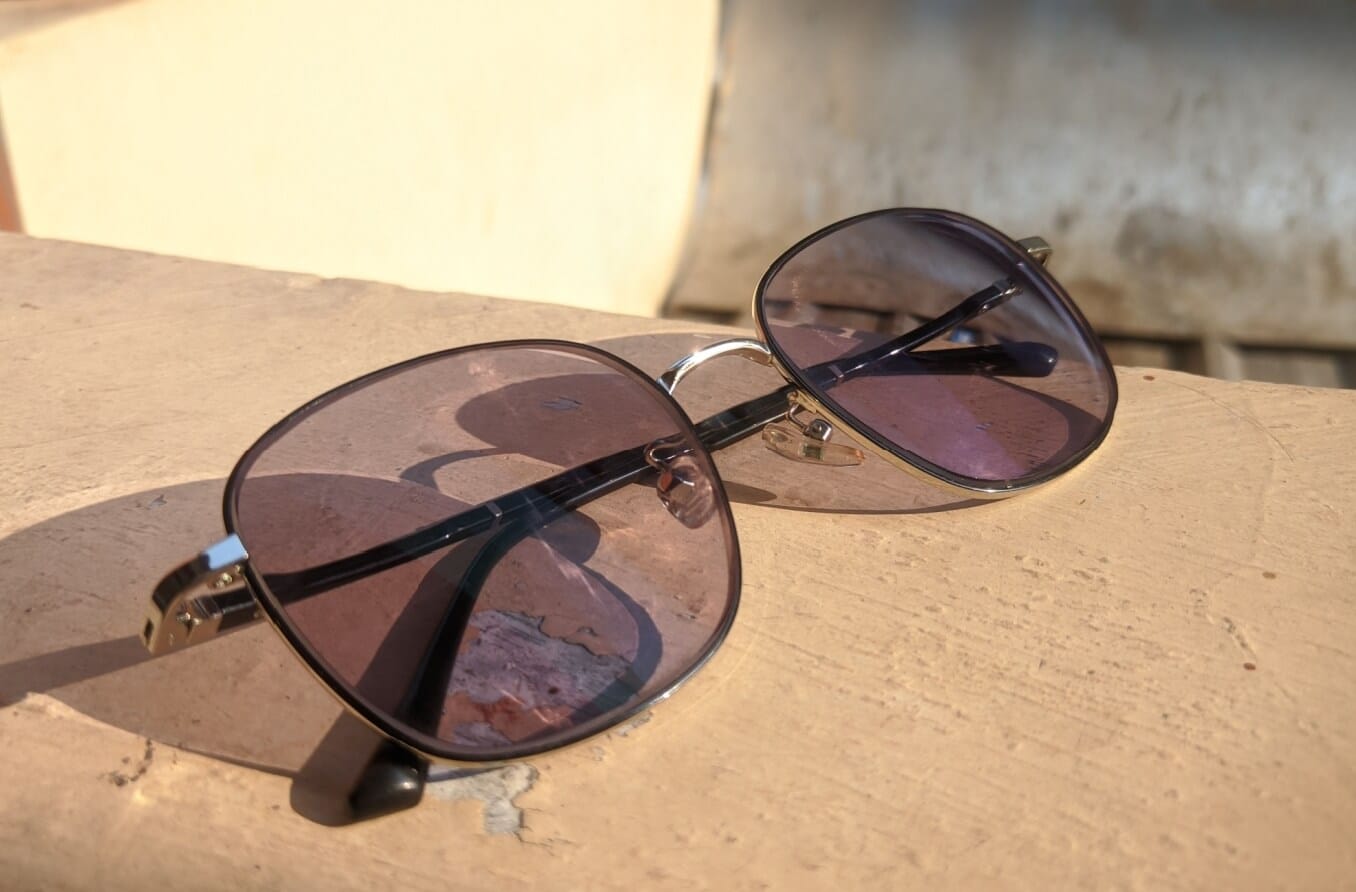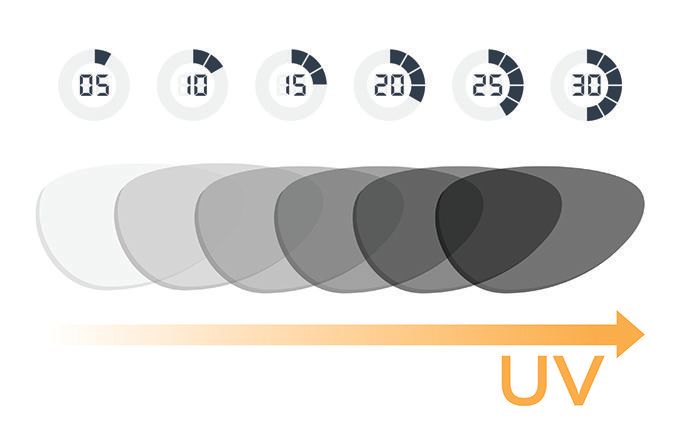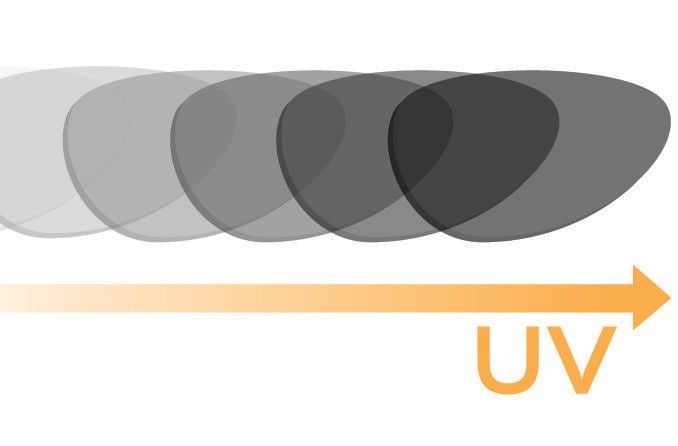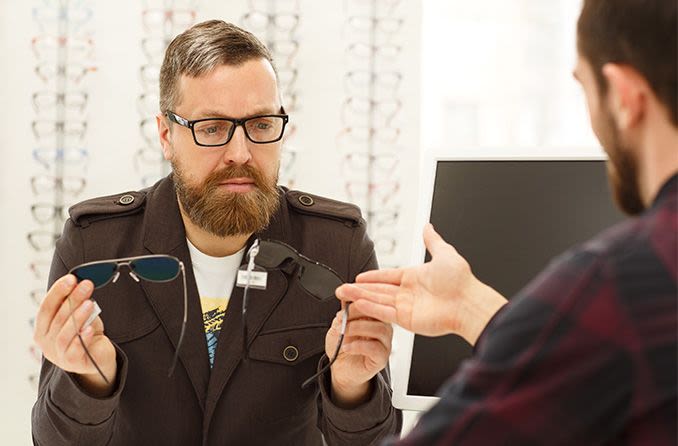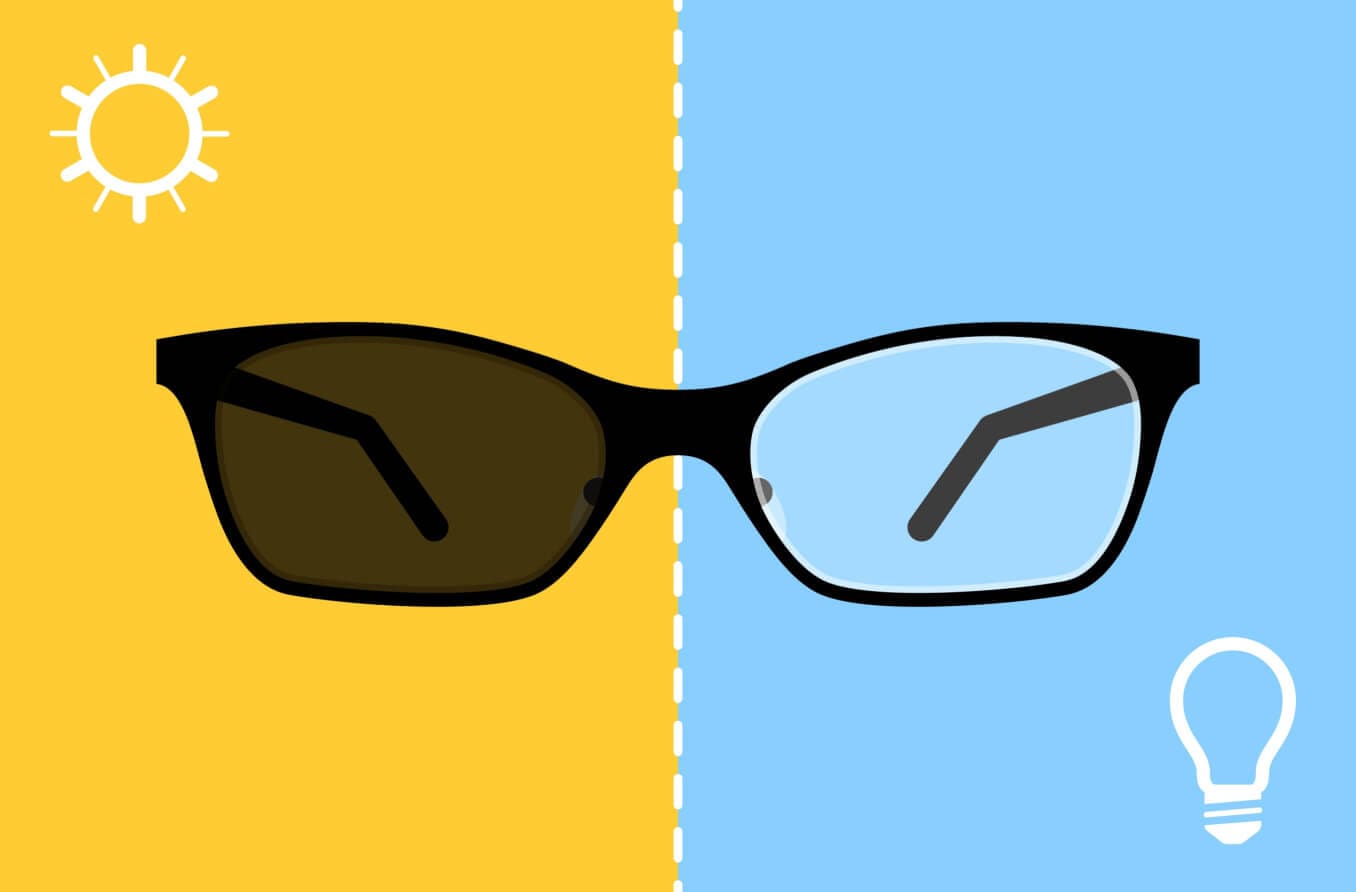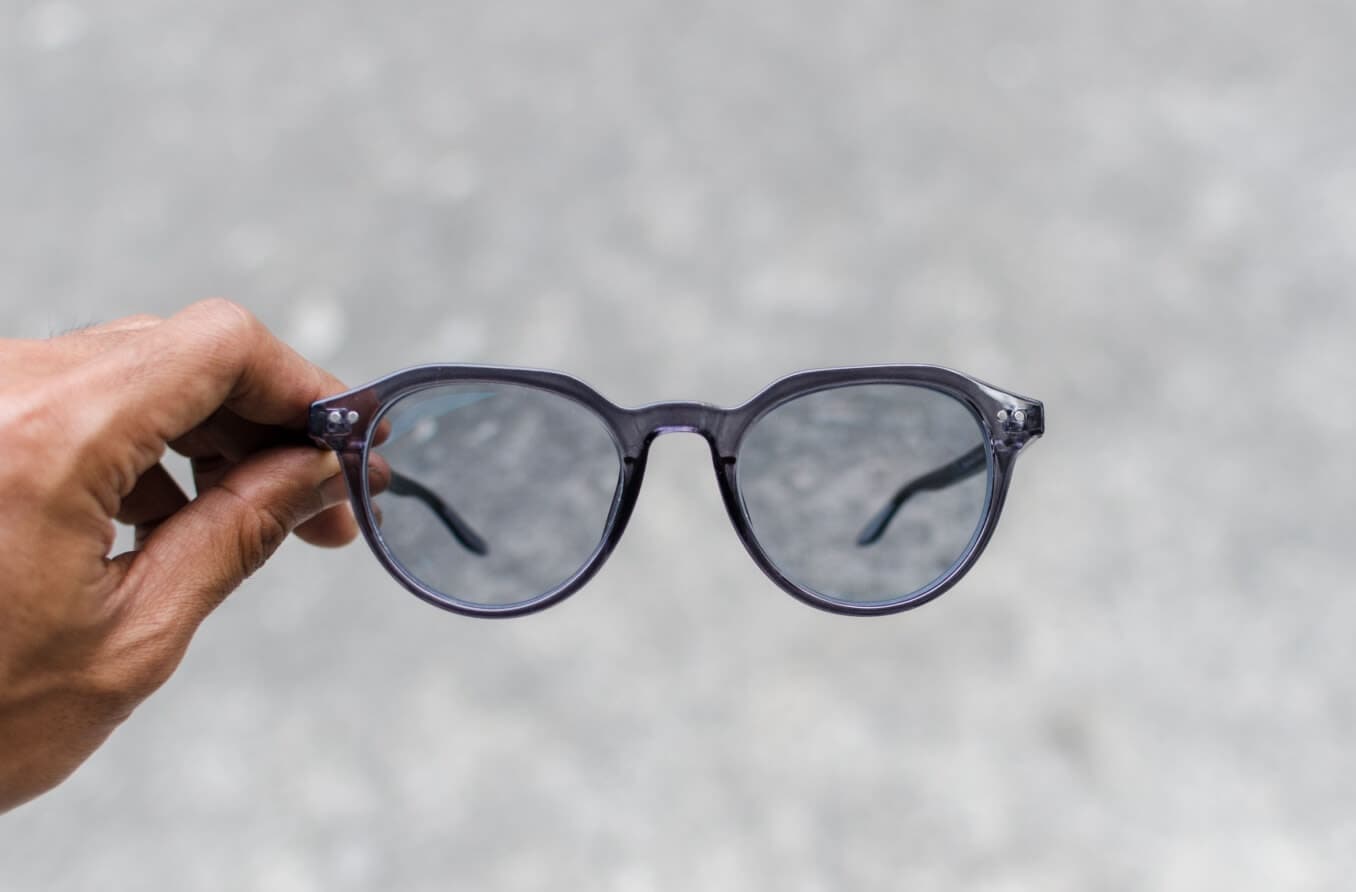Transitions® lenses are brand-name eyeglass lenses that darken with UV exposure and thus provide vision correction and sun protection in one pair of glasses. The adaptive technology of Transitions® lenses can accommodate virtually every frame, style, size and prescription.
History of Transitions Optical
In 1940, a research team at Pittsburgh Plate Glass Company (PPG) developed a material called CR-39 monomer. Engineers used the material to line the fuel tanks of military bombers in World War II to protect the tanks from bullet impact.
When WWII ended, PPG had large quantities of CR-39 monomer left over, so they had chemists explore other uses for the material. In the mid-1950s, chemists discovered that CR-39 monomer could be used in the production of eyeglass lenses, and it became the world’s most widely used ophthalmic plastic.
A different company, Corning Incorporated, first developed photochromic glass lenses in the 1960s and marketed them under the brand name PhotoGray. Inspired, PPG started testing the photochromic technology on CR-39 monomer lenses.
While another manufacturer, American Optical Corporation, beat PPG to the production of plastic photochromic lenses, sales of the lenses did poorly. PPG continued researching, testing and perfecting their product until 1989, when the company marketed the lenses under the Transitions® trademark in partnership with Essilor International. The first-generation plastic photochromic lenses were produced in 1991.
In the end, Transitions® did not use the CR-39 monomer for the lenses, as they found the material wasn’t suitable for the production process.
The first generation of Transitions® lenses needed some improvements, so the company released the second-generation lenses in late 1992 and saw enormous success. Since then, the Transitions® brand has produced six subsequent generations of lenses and expanded to a worldwide market.
How Transitions® lenses work
Transitions® infuses their lenses with trillions of photochromic molecules that change structure when exposed to UV rays. The molecules’ reaction to UV exposure causes the lenses to darken.
Using an exclusive, patented formula, the molecules can sense the level of UV exposure and adjust accordingly.
For example, if you’re in direct sunlight, the Transitions® lenses will be at their darkest. Shaded areas or overcast weather will still cause the transition lenses to adjust to the exposure, but will not darken as dramatically as when you’re in full sun.
When transitioning from outdoors to indoors, the molecules will revert to their original state, causing the lenses to lighten and become clear again.
SEE RELATED: How quickly do photochromic lenses transition?
Pros and cons of Transitions® lenses
Before investing in a pair of Transitions® lenses, it’s wise to weigh the benefits and drawbacks of owning a pair. While Transitions® prides itself as the leader in technology for transition lenses, here are some specific pros and cons to using them:
Pros
- UV protection – Transitions® offer continuous protection from the sun’s UVA and UVB rays, as well as blue light from your digital screens. So, whether you’re outdoors or in, your Transitions® have you covered.
- Convenience – Many glasses wearers know the struggle of having to switch over from regular glasses to sunglasses. With Transitions®, there’s no hassle of juggling two sets of frames, only the seamless adaptation of your lenses to your environment.
- Lower cost – While Transitions® aren’t cheap, the investment is less expensive than having to buy a separate pair of prescription sunglasses to supplement your regular eyeglasses. With photochromic eyewear, you’re getting an all-in-one deal that your vision insurance will partially or fully cover.
- Widely available – If you go through your eye doctor’s office or an optical shop to get your glasses, they’ll likely offer to add Transitions® to whatever frames you choose. Some online vendors sell transition lenses, but make sure the lenses you’ve selected are Transitions® brand lenses before you buy. Many sites sell off-brand photochromic lenses that may not be as effective as Transitions®.
- Easy to keep track of – Having one pair of glasses that will adapt to your lifestyle and environment makes it less likely that you’ll lose them. As long as you remember your glasses, you’ll have remembered your sunglasses too.
Cons
- Cold weather can affect the transition – While Transitions® lenses darken when exposed to UV rays, temperature influences how quickly the photochromic molecules react in your lenses. Cold weather causes the molecules to move more slowly, so it may take longer for your lenses to darken.
- Slow return to clear lenses – Transitions® Signature GEN S™ lenses promise to clear up indoors faster than ever. While this may be true, the response is still not immediate. There will be a few minutes during which your lenses will be tinted indoors as they return to normal.
- Some styles don’t fully darken in vehicles – Car manufacturers typically tint windshields to reduce the amount of UV radiation entering the cabin. With lessened UV exposure, some Transitions® lenses may not darken fully while you’re driving. However, the brand has created certain styles (more below) that also darken when exposed to natural light, which addresses this problem.
It’s important to note that Transitions® lenses are a specific brand of photochromic lenses, and not all transition lens brands are “created equal.” There are many photochromic lens brands outside of Transitions® that have their own set of pros and cons. So it’s best to research those specific brands before purchasing their products.
SEE RELATED: Kodak Lens history and lenses
Transitions® lenses colors and styles
With distinct style and color options, there’s a pair of Transitions® for everyone. Please note that some color options may be exclusive to a specific Transitions® style.
Color options
- Signature colors – Signature lens colors offered by Transitions® include gray, brown and graphite green.
- Style colors – Transitions® lens style colors include emerald, sapphire, amethyst and amber.
- Style mirrors – Exclusive to Transitions® XTRActive®, style mirrors provide a slight reflective effect when lenses are clear that intensifies as the lenses darken. Mirror color options include pink, red, blue, green, gold and silver shadow.
Style options
- Transitions® Signature® GEN S™ – The newest technology from Transitions® that gets darker outdoors, has the fastest fade-back time of any lens, and is completely clear indoors.
- Transitions® XTRActive® – Lenses will sense natural light to darken fully in the car and reduce glare from sunlight and car headlights.
- Transitions® Drivewear® – Lenses darken and change color to accommodate light conditions while on the road. The polarized lenses reduce glare to give a clear, picture-perfect drive.
- Transitions® light intelligent shields – The magic of Transitions® lenses applied to motorbike helmet shields. Tint color options are limited to gray.
- ACUVUE® Oasys with Transitions™ – Contact lenses equipped with Transitions™ technology to soothe the impact of harsh light on the eyes. It’s important to note that these do not replace the need for sunglasses. Non-prescription sunglasses should still be worn when in direct sunlight.
Where to buy Transitions® lenses
Ready to equip your eyewear with some Transitions® lenses? You can browse in-store or online through the following retailers:
In-store
- Eye care practices – Many, if not all, eye care practices offer their own inventory of frames for patients to browse after their eye exam. Usually, whatever frames you select can be equipped with Transitions® lenses. To be sure, call your eye doctor’s office and ask if they offer them. You can also use the “Find Your Transitions®” tool on the Transitions® website to find a provider in your area.
- LensCrafters – With many locations from which to choose, LensCrafters offers a wide variety of eyeglass frame brands and styles that they can fit with Transitions® lenses. They also offer eye exams, if you’re looking for a one-stop shop.
- America’s Best – Known for offering exceptional deals on eyeglasses and eye exams, America’s Best will put Transitions® lenses in whatever frame style you prefer. Because Transitions® lenses are a specialty lens, certain deals offered by America’s Best may not cover them. Speak with an optician if you have any concerns about coverage or cost.
Online
- Eyebuydirect – This online retailer has a virtual try-on feature that allows you to see how different frames might look on your face. Once you’ve picked your pair, you can select whether you want Transitions® lenses. Eyebuydirect frequently offers discounts and 2-day shipping on select items.
- Lensabl – Offering 15% off of your first lens order, Lensabl makes it easy for you to track where you are in the shopping process. The site provides a checklist at the bottom of the page that shows you what steps you’ve completed and what steps you have left before finalizing your order.
- FramesDirect – If you prefer name-brand frames, FramesDirect has them. Show off your Transitions® lenses in frames by top brands, such as Ray-Ban, Oakley, Versace and more. The retailer honors a one-for-one initiative, which donates a pair of glasses for every order that ships.
Transitions is a registered trademark of Transitions Optical, Inc. used under license by Transitions Optical Limited ©2024 Transitions Optical Limited.
